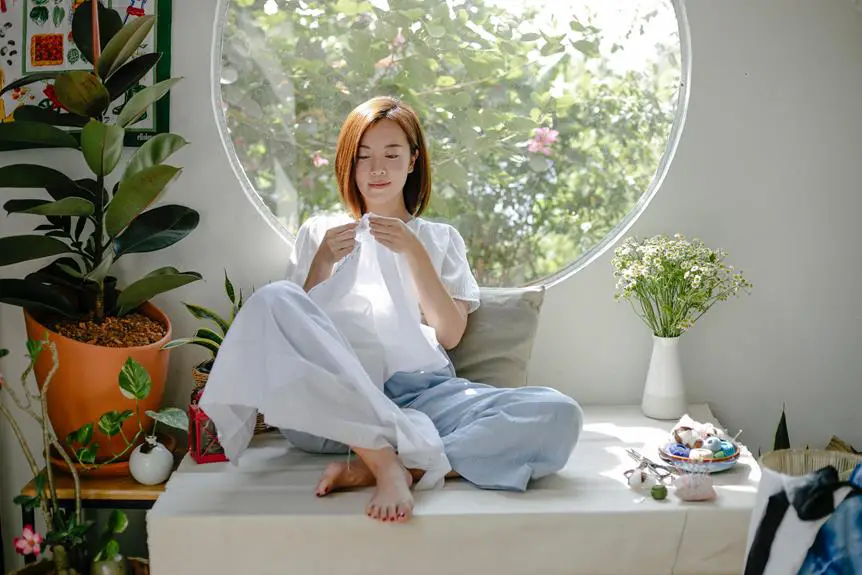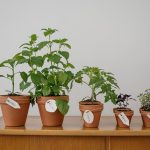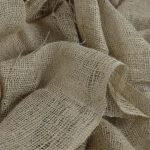Considering the myriad options for fabric planters, the 10-gallon cloth pots stand out as a potential game-changer for your gardening pursuits. This article will delve into the nuanced details and benefits of utilizing these containers, providing you with a comprehensive understanding of their efficacy.
From their impact on plant growth to tips for optimal usage, you'll gain a mastery over the subject, enabling you to make an informed decision about incorporating 10-gallon cloth pots into your gardening repertoire.
With a focus on objectivity and detail, this exploration aims to equip you with the knowledge needed to determine if these fabric planters are the ultimate choice for your gardening needs.
Key Takeaways
- 10-Gallon cloth pots offer improved aeration and healthier root growth.
- They regulate soil temperature and prevent overheating.
- Proper soil composition and drainage are crucial for plant growth in cloth pots.
- Fabric pots have advantages over plastic planters, including superior aeration and drainage.
Advantages of 10-Gallon Cloth Pots
You'll appreciate the advantages of 10-gallon cloth pots for their durability, improved aeration, and enhanced root development. These pots are designed to withstand the rigors of outdoor use, making them a durable option for container gardening.
The fabric construction allows air to permeate the pot, preventing the soil from becoming waterlogged and promoting healthier root growth. This enhanced aeration also helps to regulate the soil temperature, preventing it from overheating in hot weather. As a result, plant health is improved, and the risk of root rot is minimized.
Furthermore, the fabric material of the 10-gallon cloth pots provides an ideal environment for root development. The roots are naturally air-pruned as they reach the edges of the pot, preventing them from becoming root-bound and promoting a more extensive root system. This, in turn, leads to healthier and more vigorous plants.
Factors Affecting Plant Growth in 10-Gallon Cloth Pots
When it comes to plant growth in 10-gallon cloth pots, factors such as soil aeration and drainage play a crucial role.
The ability of the fabric pots to regulate root temperature also impacts plant health and development.
Understanding these factors will help you optimize the conditions for successful plant growth in 10-gallon cloth pots.
Soil Aeration and Drainage
To optimize plant growth in 10-gallon cloth pots, ensuring proper soil aeration and drainage is essential. The soil composition plays a crucial role in providing adequate aeration and drainage for healthy plant growth.
When using 10-gallon cloth pots for container gardening, it's important to choose a well-draining soil mix that allows air to permeate the roots. A mix of peat moss, perlite, and compost can promote optimal soil aeration and water drainage.
Additionally, employing container gardening techniques such as adding a layer of gravel at the bottom of the pot can aid in preventing waterlogging and improving overall drainage.
Root Temperature Regulation
Root temperature regulation significantly impacts plant growth in 10-gallon cloth pots, requiring attention to maintain ideal conditions for root development. When it comes to temperature regulation, factors affecting plant health in 10-gallon cloth pots include:
- Insulation: Consider using insulating materials around the cloth pots to regulate root temperature and protect them from extreme heat or cold.
- Watering Practices: Proper watering can help regulate root temperature by cooling the soil during hot weather and providing warmth during colder periods.
- Shading: Providing the right amount of shading can help regulate root temperature and prevent damage from excessive heat exposure.
Ensuring optimal root temperature is crucial for the overall health and growth of plants in 10-gallon cloth pots, particularly in the context of container gardening.
Comparing 10-Gallon Cloth Pots to Other Fabric Planters
While 10-gallon cloth pots offer certain advantages, you may wonder how they compare to other fabric planters.
When comparing 10-gallon cloth pots to plastic planters, fabric containers have several benefits. Fabric pots provide superior aeration, preventing root circling and promoting a healthier root system. They also allow for better drainage, reducing the risk of overwatering and root rot. Additionally, fabric pots have the advantage of regulating root temperature more effectively than plastic planters, leading to improved plant growth and overall health.
Compared to other fabric planters, 10-gallon cloth pots offer a larger capacity, making them suitable for larger plants or multiple smaller plants in a single container. However, other fabric planters come in a variety of sizes, allowing for more flexibility in choosing the appropriate container for different plant types and sizes.
Tips for Using 10-Gallon Cloth Pots Effectively
Here are five tips for using 10-gallon cloth pots effectively.
- Effective Watering:
Proper watering is crucial for the health of your plants in cloth pots. Ensure that the entire root ball is thoroughly watered, allowing excess water to drain out from the bottom. Use a moisture meter to gauge the moisture level in the soil, preventing overwatering or underwatering.
- Root Pruning Techniques:
As plants grow in 10-gallon cloth pots, their roots can become root-bound, affecting their overall health. Implement root pruning techniques by gently removing the plant from the pot, trimming the roots, and repotting it with fresh soil. This encourages healthy root growth and prevents root-bound issues.
- Adequate Drainage:
Good drainage is essential to prevent waterlogging and root rot. Elevate the pots slightly using pot feet or placing them on a slatted surface to allow excess water to drain freely from the bottom of the pot.
Common Misconceptions About 10-Gallon Cloth Pots
You might've heard that using 10-gallon cloth pots can lead to poor soil aeration, but the reality is that these fabric planters actually promote better air circulation, creating a healthier root environment for your plants.
Additionally, there's a common misconception that cloth pots don't offer sufficient water drainage, but in fact, they can help prevent waterlogging and promote optimal moisture levels for plant growth.
Lastly, some may believe that plant roots can become restricted in 10-gallon cloth pots, but the truth is that these containers often encourage more extensive root development due to air pruning.
Soil Aeration Benefits
Common misconceptions about 10-gallon cloth pots often overlook the significant soil aeration benefits they provide. Proper aeration is crucial for root health and can significantly impact the yield of plants, especially in container gardening.
Here are three key benefits of soil aeration in 10-gallon cloth pots:
- Enhanced oxygen flow to the roots, promoting healthy growth and nutrient absorption.
- Prevention of waterlogging, which can lead to root rot and other diseases.
- Improved microbial activity in the soil, fostering a healthier and more balanced soil ecosystem.
These benefits not only contribute to the overall well-being of the plants but also play a vital role in maximizing their productivity. Understanding the soil aeration advantages of 10-gallon cloth pots can help debunk misconceptions and optimize plant growth.
Water Drainage Advantages
Misconceptions about 10-gallon cloth pots often overlook the significant water drainage advantages they provide. The fabric construction of these pots allows excess water to drain efficiently, preventing waterlogging and the associated issues such as root rot.
Proper water drainage in these pots also promotes healthy soil moisture levels and prevents water retention, which can lead to overwatering and suffocation of plant roots. By optimizing soil moisture, these fabric planters facilitate better nutrient absorption, promoting robust root health and overall plant growth.
This enhanced drainage capability also helps to prevent salt buildup in the soil, which can be detrimental to plant health. When used correctly, 10-gallon cloth pots offer superior water drainage advantages that contribute to the overall success of container gardening.
Plant Root Development
Despite the previously mentioned water drainage advantages, some misconceptions persist about the impact of 10-gallon cloth pots on plant root development. It's important to address these misconceptions to understand the full scope of using cloth pots for planting.
- Plant Nutrient Uptake: Contrary to popular belief, 10-gallon cloth pots don't hinder plant nutrient uptake. In fact, the breathable fabric promotes air pruning of roots, which enhances nutrient absorption.
- Root Structure Development: The flexibility of cloth pots allows for better root structure development. Roots are air-pruned when they reach the fabric, resulting in a denser root system that promotes healthier plant growth.
- Moisture Regulation: Cloth pots facilitate optimal moisture regulation, preventing waterlogging and promoting oxygenation of the root zone, which is crucial for overall root development.
Understanding these aspects of plant root development is essential for utilizing 10-gallon cloth pots effectively and maximizing plant growth.
Best Plants for 10-Gallon Cloth Pots
You can grow a variety of vegetables in 10-gallon cloth pots. These pots are suitable for plants with shallow root systems, making them perfect for growing herbs, salad greens, and compact vegetables. Here are some of the best plants for 10-gallon cloth pots:
| Vegetables | Herbs |
|---|---|
| Tomatoes | Basil |
| Peppers | Cilantro |
| Cucumbers | Parsley |
| Zucchini | Chives |
When growing vegetables in 10-gallon cloth pots, it's essential to use the best fertilization techniques to ensure optimal growth. Consider using a balanced, slow-release fertilizer to provide essential nutrients throughout the growing season. Additionally, monitoring the moisture level is crucial, so implementing an optimal watering schedule is vital. For most plants, watering when the top inch of soil feels dry is ideal, but it's important to adjust based on the specific needs of each plant.
Frequently Asked Questions
Can 10-Gallon Cloth Pots Be Used for Hydroponic Gardening?
Yes, 10-gallon cloth pots can be used for hydroponic gardening. They are versatile soil alternatives, promoting healthy root growth and optimal nutrient absorption. The fabric material allows proper aeration and drainage, creating an ideal environment for plant growth.
Are There Any Special Considerations for Using 10-Gallon Cloth Pots in Hot or Cold Climates?
When using 10-gallon cloth pots in extreme climates, special considerations for temperature control and watering techniques are crucial. In hot climates, consider providing shade and extra watering, while in cold climates, insulate and monitor soil temperature.
What Are the Best Ways to Clean and Maintain 10-Gallon Cloth Pots for Long-Term Use?
To effectively clean and maintain 10-gallon cloth pots for long-term durability, start by gently scrubbing with mild soap and water, followed by thorough drying. Regularly inspect for wear and tear, and ensure proper storage to prolong their lifespan.
Can 10-Gallon Cloth Pots Be Used for Growing Trees or Larger Plants?
Yes, 10-gallon cloth pots can be used for growing trees or larger plants. However, it's important to consider the size limitations and ensure proper root development. Research the specific needs of your plant to ensure success.
Are There Any Specific Fertilizers or Nutrients That Work Best for Plants in 10-Gallon Cloth Pots?
For plants in 10-gallon cloth pots, the best fertilizers to consider are those with balanced nutrient profiles, including nitrogen, phosphorus, and potassium. Nutrient requirements will vary depending on the specific plants being grown.
- Troubleshooting Common Issues With Nonwoven Fabrics - July 11, 2025
- How Nonwoven Wallpaper Differs From Traditional Paper - July 11, 2025
- Are Reusable Nonwoven Bags Eco-Friendly? - July 11, 2025







